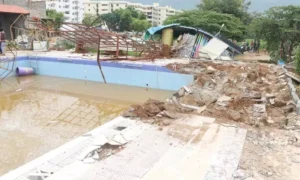What Happens After You Remove a Pool? Understanding the Restoration Process

Swimming pool demolition can completely transform your property. Whether you aim to lower conservation costs, reclaim grass space, or draw up your home in demand, pool elimination is an important project that does not end formerly the pool ceases. What occurs subsequently to evacuation—the restoration process—is equally important to ensure your portion is safe, operational, and ready for its next stage.
If you are preparing for pool replacement, understanding the renovation process will help you form informed decisions about how to bring your outdoor room back to life.
The Importance of Proper Restoration
Once a pool is detached, your yard is abandoned with an abundant cavity that must be filled and compacted properly. Proper restoration ensures that:
- The ground remains stable and will not decrease or shift over time.
- Drainage plans work efficiently and halt water pooling.
- The surface is reliable, level, and ready for landscaping or explanation.
What Happens After Pool Removal
Step 1: Site cleaning
- Any sharp objects or leftover waste are removed.
- The section is cleared for contents and grading.
- If plumbing or electrical lines were connected, they are wrapped up and safely discontinuous
Step 2: Hole Backfilling
The empty pool crater is filled, accompanied by a mix of clean soil, crushed rock, and gravel. The aim is to replace the ground with a natural, constant state.
Common fill materials include:
- Crushed concrete or gravel: Provides seepage and structural support.
- Topsoil: Used in the above layers for lawn or grass.
- Clean soil or sand: Used as a base fill material.
Each coating is compacted fully to prevent future submerging. Then level the surface area as needed.
Step 4: Soil Stabilization and Settling Period
Even with cautious compaction, the soil will naturally relieve over time. Most pool removal experts recommend allowing the ground to settle for a week or even a couple of months before attempting major lawn or construction.
During this period:
- Minor sinking or soft spots can appear and may be corrected easily.
- The soil’s moisture levels are sustained.
- You can test drainage patterns to visualize how water flows across the rebuilt area.
Step 5: Inspection
They will check for:
- Soil compaction regularity
- Drainage efficiency
- Stability and slope accuracy
- After approval, you can carry on permanent lawn or hardscaping projects.
Maintenance Tips:
- Watch for any signs of soil establishing or water pooling afterwards heavy rain.
- Fill minor dips with supplementary topsoil if desired.
- Keep vegetation healthy to help stabilize the soil generally.
Transforming the Space: New Possibilities
Creative ideas for your rebuilt yard:
- Install a pergola or rustic kitchen for amusement.
- Add a home garden or nursery.
The potential after pool removal in Oakland is endless—and frequently more practical than upholding an unused pool.
Conclusion
Whether you select to create a diminishing garden, an amusement area, or a family-friendly lawn, the effort invested in post-elimination restoration will reward you accompanying a more functional, delicate, and valuable outdoor room.





